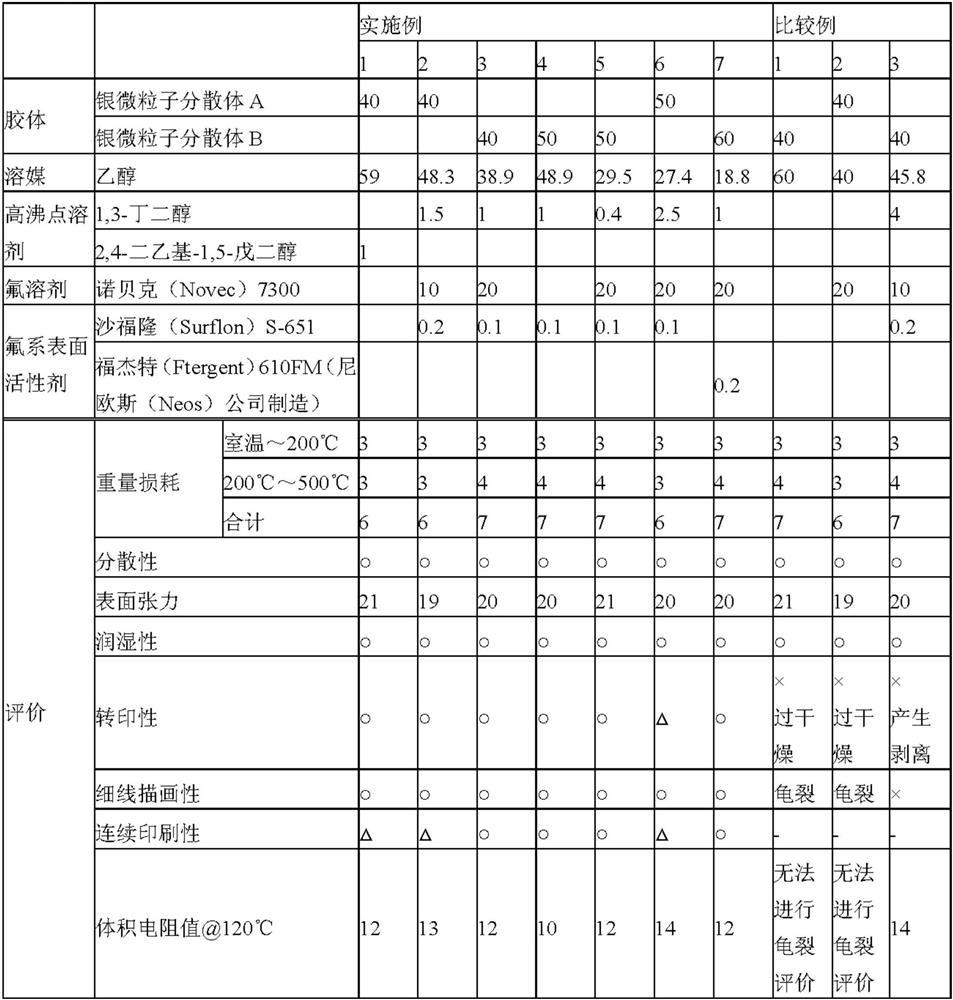conductive ink
A conductivity and ink technology, applied in the direction of conductive pattern formation, ink, conductive materials dispersed in non-conductive inorganic materials, etc., can solve problems such as complicated steps
- Summary
- Abstract
- Description
- Claims
- Application Information
AI Technical Summary
Problems solved by technology
Method used
Image
Examples
preparation example 1
[0147] 8.9 g of 3-methoxypropylamine (reagent grade 1 manufactured by Wako Pure Chemical Industries, Ltd., carbon number: 4, logP: -0.5), and 0.3 g of Dispa as a polymer dispersant DISPERBYK-111 was mixed and fully stirred with a magnetic stirrer to generate an amine mixture (relative to the silver, the molar ratio of the added amine was 10). Then, while stirring, 3.0 g of silver oxalate was added. After silver oxalate was added, stirring was continued at room temperature, whereby the silver oxalate was changed into a viscous white substance, and the change was visually confirmed to be complete in appearance, and the stirring was terminated at this point (the first step).
[0148] The obtained mixed solution was transferred to an oil bath, and heated and stirred at 120°C. Immediately after starting the stirring, the reaction accompanied by the generation of carbon dioxide was started, and then the stirring was continued until the generation of carbon dioxide was completed, t...
preparation example 2
[0151] 8.9 g of 3-methoxypropylamine (reagent grade 1 manufactured by Wako Pure Chemical Industries, Ltd., carbon number: 4, logP: -0.5), and 0.3 g of Dispa as a polymer dispersant DISPERBYK-102 was mixed and fully stirred with a magnetic stirrer to generate an amine mixture (relative to silver, the molar ratio of the added amine was 5). Then, while stirring, 3.0 g of silver oxalate was added. After silver oxalate was added, stirring was continued at room temperature, whereby the silver oxalate was changed into a viscous white substance, and the change was visually confirmed to be complete in appearance, and the stirring was terminated at this point (the first step).
[0152] The obtained mixed solution was transferred to an oil bath, and heated and stirred at 120°C. Immediately after starting the stirring, the reaction accompanied by the generation of carbon dioxide was started, and then the stirring was continued until the generation of carbon dioxide was completed, thereb...
PUM
| Property | Measurement | Unit |
|---|---|---|
| particle size | aaaaa | aaaaa |
| electrical resistivity | aaaaa | aaaaa |
| surface tension | aaaaa | aaaaa |
Abstract
Description
Claims
Application Information
 Login to View More
Login to View More - R&D
- Intellectual Property
- Life Sciences
- Materials
- Tech Scout
- Unparalleled Data Quality
- Higher Quality Content
- 60% Fewer Hallucinations
Browse by: Latest US Patents, China's latest patents, Technical Efficacy Thesaurus, Application Domain, Technology Topic, Popular Technical Reports.
© 2025 PatSnap. All rights reserved.Legal|Privacy policy|Modern Slavery Act Transparency Statement|Sitemap|About US| Contact US: help@patsnap.com

